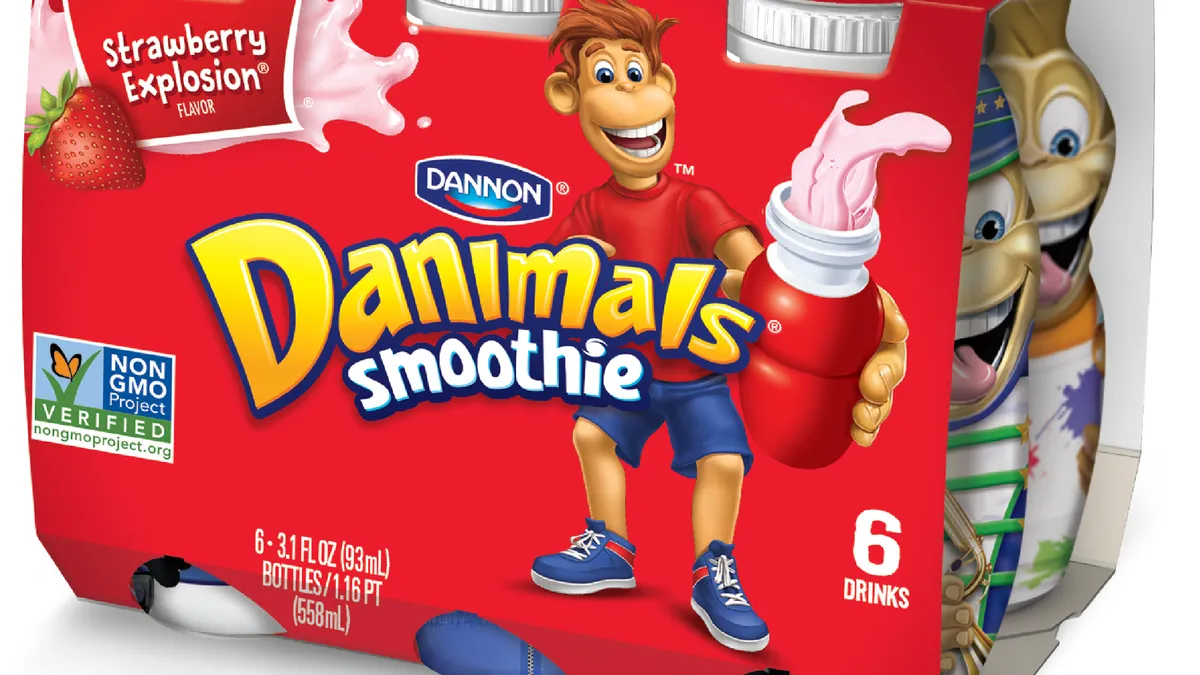Dive Brief:
- A new study by Packaged Facts finds the most important meal of the day is evolving. Consumers are looking for easy breakfast options that are rich in fiber and without additional additives. For morning foods lovers, 46.9% agree that nutritional value is the most important factor in the products they eat.
- While cereal is still the most popular morning food, the product category experiencing the strongest growth is drinkable yogurt and smoothies, with the segment rising 19.9% from 2016 to 2017. Packaged Facts projects the drinkable yogurt market will grow another 13% by 2022.
- “There is much room for innovation in breakfast foods,” David Sprinkle, Research Director for Packaged Facts, said in a release. “With the reputation for the most important meal of the day, maximizing the reputation of a product’s nutrition while highlighting its’ convenience, is critical in appealing to demographics across the board.”
Dive Insight:
As consumers get busier, the first and arguably most important meal of the day is becoming a polarizing choice — some people love it while others almost never eat it. Of those that enjoy it, 56% want breakfast to be simple and easy to prepare.
Future Market Insights estimated that worldwide demand for on-the-go breakfast products was more than $1 billion in 2015. In addition, Nielsen reported that grab-and-go breakfast items were the biggest market gainer in 2016. The sharp rise in drinkable yogurt sales is emblematic of this trend, with a growth rate of 20% in the past year and a projected increase of 13% by 2022. Besides being protein-rich, drinkable yogurt is a good option for those who are looking to consume a nutritionally dense, low-sugar, portable breakfast.
At the same time, as frozen foods have seen a resurgence in popularity, frozen waffles and sandwiches have been among the beneficiaries. Manufacturers should pay attention and perhaps gear their focus toward hand-held, single-serving options that are easy to get out the door.
Notably, the category that has suffered most from evolving consumer tastes is cereal. A combination of hectic morning routines and a trend toward high-protein, portable foods and away from sugar have hurt cereal's status as a morning food staple. The industry is down from nearly $14 billion in annual sales in 2000 to less than $8.75 billion in 2016. Similarly, Packaged Facts reports a 2.2% decline in cold breakfast cereal; at the same time, 84.7% of households still eat cereal.
This continued penetration of cereal in American households is partially due to cereal’s second most popular use as a snack. However, it is also attributable to children. Packaged Facts noted that in 2017, households with kids were 12% more likely than average to use cold cereal. Perhaps this is an indicator that manufacturers should encourage their marketing team to cater to young parents who are likely to buy healthful cereals both to satisfy their child’s cravings, as well as a snack for themselves.
Another category that manufacturers should target is aging baby boomers. From 2018 to 2020, the fastest growing age group will be those 65 and older, and breakfast players will need to be mindful of their breakfast habits and preferences to ensure market stability. The problem is, how does a product appeal to both the young and the old generations simultaneously?
A good way to reach older consumers as well as millennials who are coming into their buying power is to reinvigorate old staples. Overnight oats are a good example — hot cereal consumption has increased by 10% with those 75+, while simple prep, grab-and-go convenience and interesting flavor combinations have made the product a hot trend in the breakfast arena for younger adults.
Despite the challenges in this space, there are still plenty of opportunities for manufacturers to find growth. However, doing so while appealing across multiple generations may be a challenge. As consumers spend less time eating breakfast, food manufacturers would be wise to introduce new products or repackage old mainstays that incorporate the value-adds young consumers seek from their food — like protein, complex flavors and textures — without straying too far from the familiar products that older generations remember.












